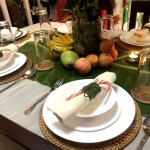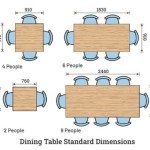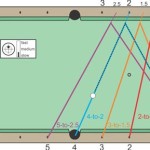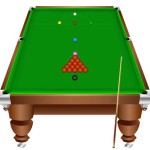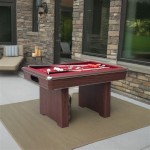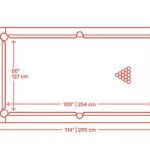Modern Pedestal Dining Tables: A Comprehensive Overview
Modern pedestal dining tables represent a significant departure from traditional four-legged designs, offering a unique blend of aesthetic appeal and functional advantages. These tables are characterized by a single, central support or pedestal, rather than legs placed at each corner. This design shift impacts both the visual impact of the dining space and the practical aspects of seating and movement around the table.
The popularity of pedestal dining tables has grown considerably in recent years, owing to their versatility and ability to complement a wide range of interior design styles, from minimalist and contemporary to mid-century modern and even transitional. Understanding the features, benefits, and considerations involved in selecting a modern pedestal dining table is crucial for making an informed purchase decision that enhances both the functionality and aesthetics of a dining area.
Design and Aesthetic Considerations
The core design element of a modern pedestal dining table is, of course, the pedestal itself. These pedestals can take on a multitude of forms, contributing significantly to the overall aesthetic. Simple, cylindrical pedestals often lend themselves to a minimalist or Scandinavian aesthetic, emphasizing clean lines and unadorned surfaces. More elaborate designs might feature flared bases, geometric shapes, or even sculptural elements, adding a touch of artistry and visual interest. Material choices for the pedestal also play a critical role. Common materials include metal (stainless steel, powder-coated steel), wood (solid wood, veneers), and even concrete or composite materials. The choice of material will influence the table's durability, maintenance requirements, and overall style.
The shape of the tabletop is another key design consideration. Round and oval tabletops are particularly well-suited for pedestal bases, as they promote conversation and create a more intimate dining experience. Square and rectangular tabletops are also viable options, though the design of the pedestal must be carefully considered to ensure adequate stability, especially for larger tables. The tabletop material further contributes to the aesthetic. Glass tabletops offer a modern and airy feel, while solid wood tabletops provide warmth and a sense of traditional craftsmanship. Engineered wood options, such as MDF with veneers, offer a cost-effective alternative that can mimic the look of solid wood.
Beyond the pedestal and tabletop, the overall design should consider the scale and proportions of the table in relation to the dining space. A table that is too large can overwhelm a small room, while a table that is too small may feel insignificant in a larger space. Careful consideration should be given to the dimensions of the room, the placement of other furniture, and the number of people who will typically be using the table. Furthermore, the color palette and finish of the table should complement the existing décor. Neutral colors, such as white, gray, and black, are versatile options that can easily blend with a variety of styles. Bold colors or unique finishes can create a statement piece, but require more careful coordination with the surrounding environment.
Functional Advantages and Practical Considerations
One of the primary functional advantages of a pedestal dining table is the increased legroom it provides compared to traditional four-legged tables. With no legs obstructing the corners, diners can sit comfortably without bumping their knees. This is particularly beneficial in smaller dining spaces where maximizing seating capacity is a priority. The pedestal design also makes it easier to maneuver chairs around the table, allowing for smoother transitions and greater flexibility in seating arrangements.
Stability is a critical factor in the design and construction of a pedestal dining table. The pedestal must be sufficiently sturdy to support the weight of the tabletop and any items placed upon it. The base of the pedestal should be wide enough to provide a stable foundation, preventing the table from tipping or wobbling. For larger tables or those with heavier tabletops, the pedestal may need to be reinforced with internal supports or a wider base. The quality of the materials and the craftsmanship involved in the construction of the pedestal are crucial determinants of its stability and durability.
The size and shape of the tabletop should be carefully considered in relation to the number of people who will be using the table. A general guideline is to allow at least 24 inches of width per person and 12 inches of depth for place settings. Round tables are generally more efficient at accommodating larger groups, as they allow for easier conversation and equal access to the center of the table. However, rectangular tables may be more suitable for narrow dining spaces or for situations where maximizing surface area is important. Extendable pedestal dining tables offer a versatile solution for accommodating both small and large gatherings. These tables typically feature a mechanism that allows the tabletop to be expanded by adding leaves or extensions, providing additional seating capacity when needed.
Material Selection and Maintenance
The choice of materials for a modern pedestal dining table is a crucial factor that affects its durability, aesthetics, and maintenance requirements. Solid wood is a popular choice for both the pedestal and the tabletop, offering a warm and natural look. Hardwoods such as oak, maple, and walnut are particularly durable and resistant to scratches and dents. However, solid wood can be susceptible to changes in humidity and temperature, which can cause it to warp or crack over time. Proper sealing and finishing are essential to protect solid wood from moisture and damage.
Engineered wood options, such as MDF (medium-density fiberboard) and plywood, offer a cost-effective alternative to solid wood. These materials are often covered with veneers or laminates to mimic the look of solid wood. Engineered wood is generally more stable than solid wood and less prone to warping or cracking. However, it may not be as durable or resistant to damage. Laminates are a durable and easy-to-clean option for tabletops, offering resistance to scratches, stains, and heat. Veneers provide a more natural look but may be more susceptible to damage.
Metal is another popular material for pedestal dining tables, particularly for the pedestal itself. Stainless steel is a durable and corrosion-resistant option that offers a modern and sleek look. Powder-coated steel is another versatile option that can be finished in a wide range of colors. Metal pedestals are generally easy to clean and maintain, requiring only occasional wiping with a damp cloth. Glass tabletops offer a modern and airy feel, but they can be prone to scratches and fingerprints. Tempered glass is a stronger and safer option than regular glass, as it is less likely to shatter into sharp pieces if broken. Glass tabletops require regular cleaning to maintain their clarity and shine.
Maintenance requirements vary depending on the materials used in the construction of the table. Solid wood tabletops should be cleaned regularly with a soft cloth and a wood cleaner specifically designed for the finish. Avoid using harsh chemicals or abrasive cleaners, as these can damage the finish. Spills should be wiped up immediately to prevent staining. Glass tabletops should be cleaned with a glass cleaner and a soft cloth. Avoid using abrasive cleaners or scouring pads, as these can scratch the surface. Metal pedestals can be cleaned with a damp cloth and a mild detergent. Avoid using harsh chemicals or abrasive cleaners, as these can damage the finish. Regular maintenance will help to keep the table looking its best and extend its lifespan.
In summary, selecting a modern pedestal dining table requires careful consideration of design aesthetics, functional advantages, stability, materials, and maintenance requirements. By understanding these factors, individuals can make informed decisions that result in a dining space that is both stylish and functional, meeting their specific needs and preferences.

39 Modern Round Dining Table For 4 Walnut Solid Wood Tabletop Pedestal Base Homary

Caius Mid Century Modern Natural Oak Veneered Oval Pedestal Dining Table 79 W 71 80 Kathy Kuo Home

Walker Edison Modern 48 Round Solid Wood Pedestal Dining Table White Com

48 Round Solid Wood Pedestal Dining Table Walker Edison

Tyler Modern Classic Black Pedestal Rectangular Dining Table 95 25 W

39 Modern Round Dining Table For 4 Natural Solid Wood Tabletop Pedestal Base Homary

Modern Live Edge Wood Dining Table Legacy Base Pedestal Alabama Sawyer

Fufu Gaga The Modern Concise Style Black Wooden 63 In 78 7 Width Rectangle Pedestal Base Dining Table For 6 Seat At Least Lbb Kf020342 01 C Home Depot

Round Pedestal Base Dining Table Reclaimed Wood Alabama Sawyer

Jofran Nash Mid Century Modern 50 Round Pedestal Dining Table Com

